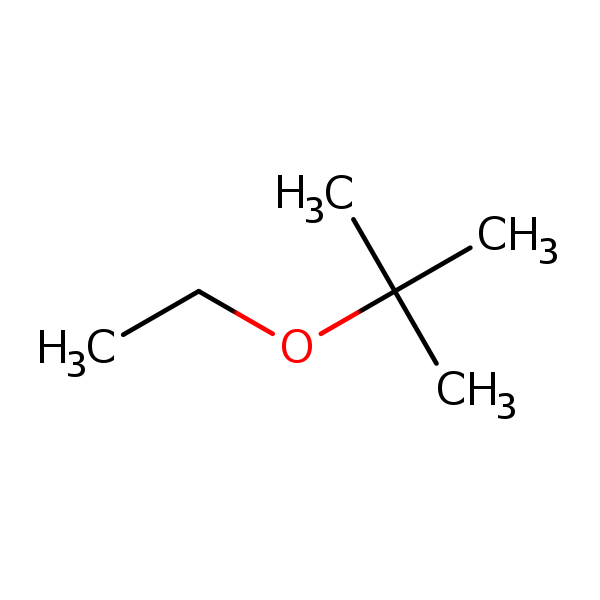Ethyl Tertiary Butyl Ether (ETBE)
CASRN 637-92-3 | DTXSID0025604
Noncancer Assessment
Reference Dose for Oral Exposure (RfD) (PDF)
(8 pp, 298 K)
Last Updated: 08/13/2021
| System | RfD (mg/kg-day) | Basis | PoD | Composite UF | Confidence |
|---|---|---|---|---|---|
| Urinary | 1 | Increased absolute kidney weight in female rats |
BMDL
10
(HED):
2.88
x 101 mg/kg-day |
30 | High |
Reference Concentration for Inhalation Exposure (RfC) (PDF)
(8 pp, 298 K)
Last Updated: 08/13/2021
| System | RfC (mg/m3) | Basis | PoD | Composite UF | Confidence |
|---|---|---|---|---|---|
| Urinary | 4 x 10 1 | Increased absolute kidney weight in female rats |
NOAEL
:
1.11
x 103 mg/m3 |
30 | Medium |
Cancer Assessment
Weight of Evidence for Cancer (PDF)
(8 pp, 298 K)
Last Updated: 08/13/2021
| WOE Characterization | Framework for WOE Characterization |
|---|---|
| Suggestive evidence of carcinogenic potential (Inhalation route) | Guidelines for Carcinogen Risk Assessment (U.S. EPA, 2005) |
- Under EPA’s Guidelines for Carcinogen Risk Assessment (U.S. EPA, 2005), ethyl tertiary butyl ether has “suggestive evidence of carcinogenic potential" for the inhalation route and “inadequate information to assess carcinogenic potential” for the oral route.
- This may be a synopsis of the full weight-of-evidence narrative.
Quantitative Estimate of Carcinogenic Risk from Oral Exposure (PDF) (8 pp, 298 K)
Information reviewed but value not estimated.
Quantitative Estimate of Carcinogenic Risk from Inhalation Exposure (PDF) (8 pp, 298 K)
Inhalation Unit Risk:
8
x 10-5
per mg/m3
Extrapolation Method: Linear extrapolation from the POD ((BMCL10(HED)) associated with 10% extra cancer risk.
Tumor site(s): Hepatic
Tumor type(s): Hepatocellular adenomas and carcinomas (Saito et al. 2013; JPEC, 2010b)
- Human Health Benchmarks for Pesticides (HHBP). This database provides human health benchmarks for pesticides that may be present in drinking water.
- Office of Pesticide Programs Pesticide Chemical Search. This database provides links to health effects information and registration status for pesticides.
- Chemistry Dashboard. This database provides information on chemical structures, experimental and predicted physicochemical, and toxicity data.
You will need Adobe Reader to view some of the files on this page. See EPA's PDF page to learn more.
Contact Us to ask a question, provide feedback or report a problem.



